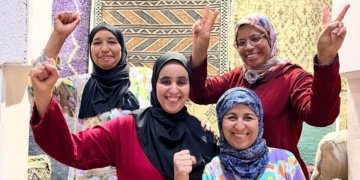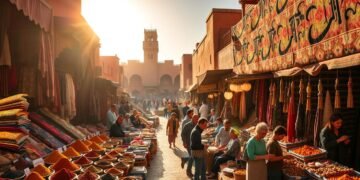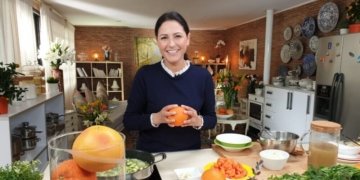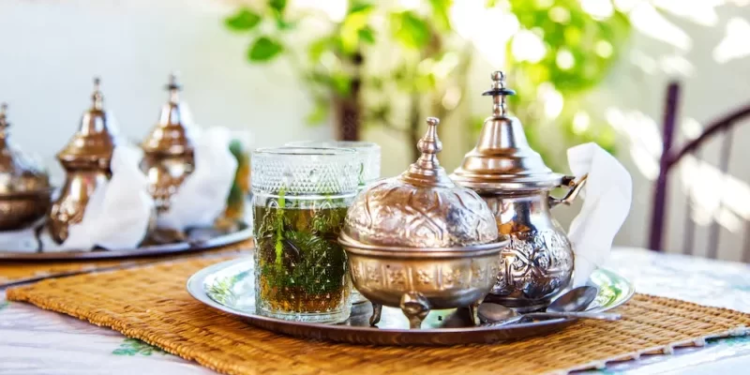Moroccan tea, also known as “atai” in Moroccan Arabic, is an integral part of Moroccan culture and daily life. It is a ritual that is enjoyed by people of all ages and is often served as a sign of hospitality to guests.
The origins of Moroccan tea can be traced back to the 16th century, when it was introduced to Morocco by Sufi mystics. The tea is made with a blend of green tea leaves and various herbs and spices, including mint, which gives it its distinctive flavor.
To prepare Moroccan tea, the tea leaves and spices are placed in a teapot and hot water is added. The mixture is then left to steep for a few minutes before being poured into small glasses. The tea is usually served sweet, with sugar added to taste.
Moroccan tea is traditionally served in a group setting, with the tea being poured from a height in a ceremony known as “serving the tea.” This is meant to aerate the tea and give it a frothy texture. The tea is usually served with small pastries or cookies.
In Moroccan culture, tea is more than just a drink – it is a way of life and a symbol of hospitality. It is often served at special occasions, such as weddings and celebrations, and is an important part of Moroccan culture and tradition.
In conclusion, tea in Morocco is a unique and flavorful blend of green tea and herbs and spices, and is an integral part of Moroccan culture and daily life. It is a symbol of hospitality and is often served at special occasions and celebrations. Whether you are a visitor to Morocco or simply looking to experience a new and delicious tea, tea is a must-try.




























